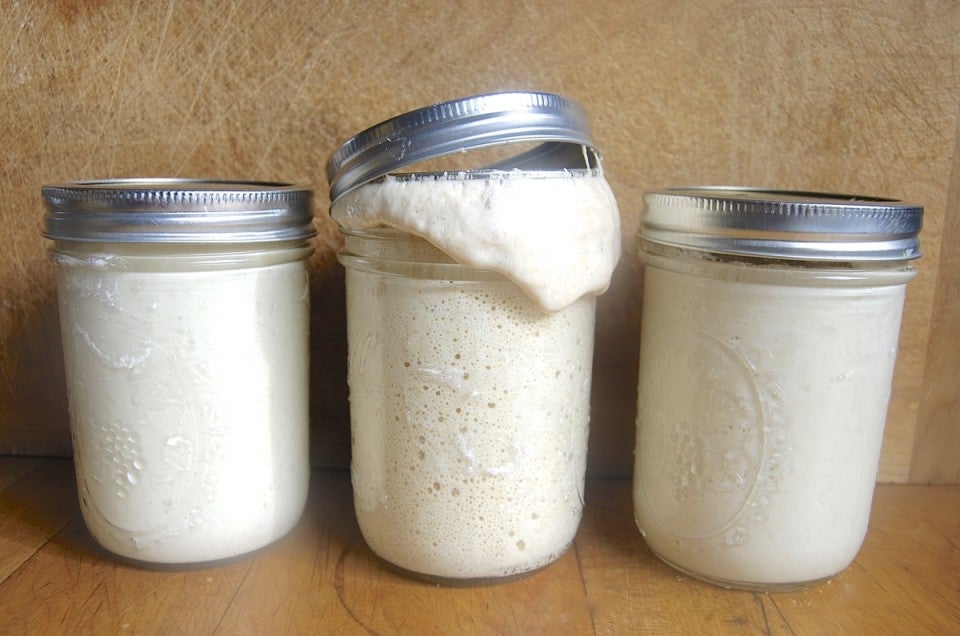


When I first began baking with sourdough, I remember hearing older bakers talk about creating a new starter by first burying wild grapes in the flour they planned to use. Wild grape sourdough starter, while it wouldn't ultimately perform any differently than starter created with "un-graped" flour and water, would become active more quickly, they said.
I never did try making that wild grape sourdough starter — until now.

The other morning, walking through a wild meadow with my dogs, I suddenly caught a whiff of grapes on the warm, humid air. I looked around and, sure enough, poking out of a thicket were the telltale heart-shaped leaves of grapevines.
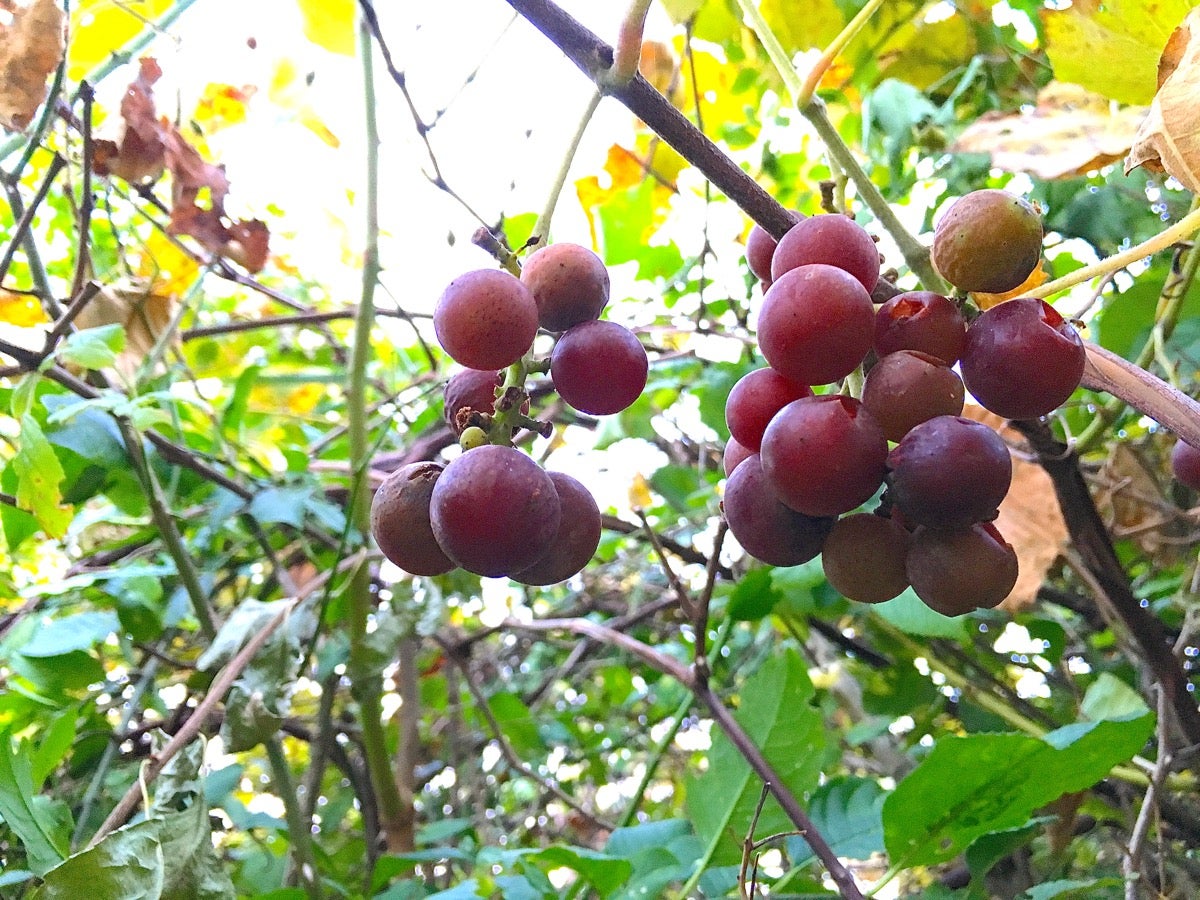
I pulled aside brambles and twigs to find beautifully ripe grapes, some just starting to soften, others plump and firm. Eating a few, I found them thick-skinned and seedy, but wonderfully sweet.
Grabbing a handful of grapes, I headed home along the salt marsh, carefully holding them by the stem so as not to disturb their skin.
What's up with that? The skin of wild grapes (as well as berries) is positively seductive to wild yeast. Wild yeast floating in the air will collect on grape skins. So legend has it that burying wild grapes in flour will transfer some of that wild yeast to the sourdough starter you make with the flour.
Let's see what happens.
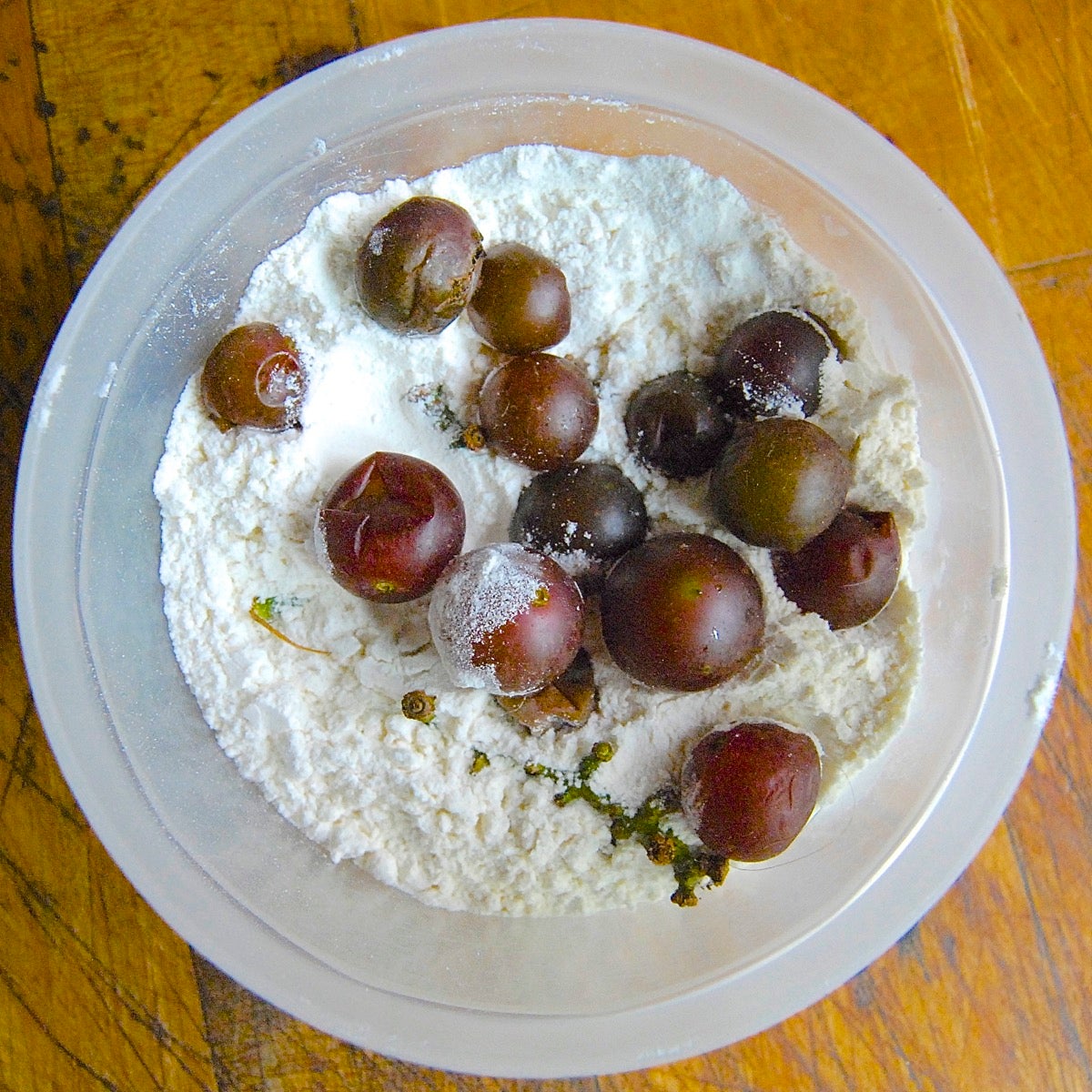
Here I've buried a small handful of grapes in a scant 1 cup (4 ounces) of King Arthur Unbleached All-Purpose Flour. I'll leave them in the flour overnight, then remove them when I'm ready to make my starter.
Disclaimer: This isn't strict science. I didn't weigh the grapes, nor did I ascertain what type they are, nor "vet" them for their wild yeast content. This is simply a seat-of-the-pants food experiment — one which I encourage you to perform yourself, should you get the chance.
I'll compare my grape-enhanced flour against King Arthur White Whole Wheat Flour and plain King Arthur all-purpose flour.
Why the whole wheat flour? Starter created from whole wheat or rye flour quickly becomes active for the same reason grape-flour starter would: the microflorae in whole grains are attractive to wild yeast.
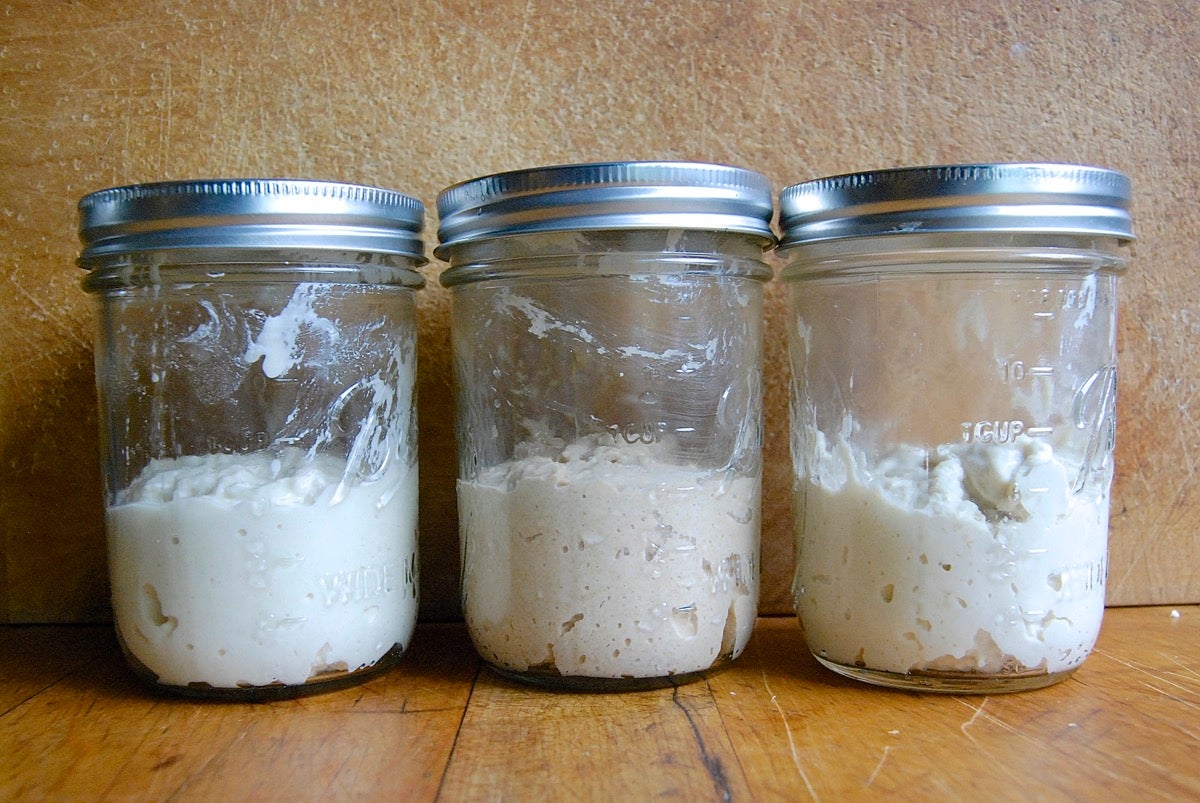
Putting 4 ounces of each type of flour in three different jars, I add 4 ounces of cool water, lay the jar lids loosely on top, and set the jars on the counter.
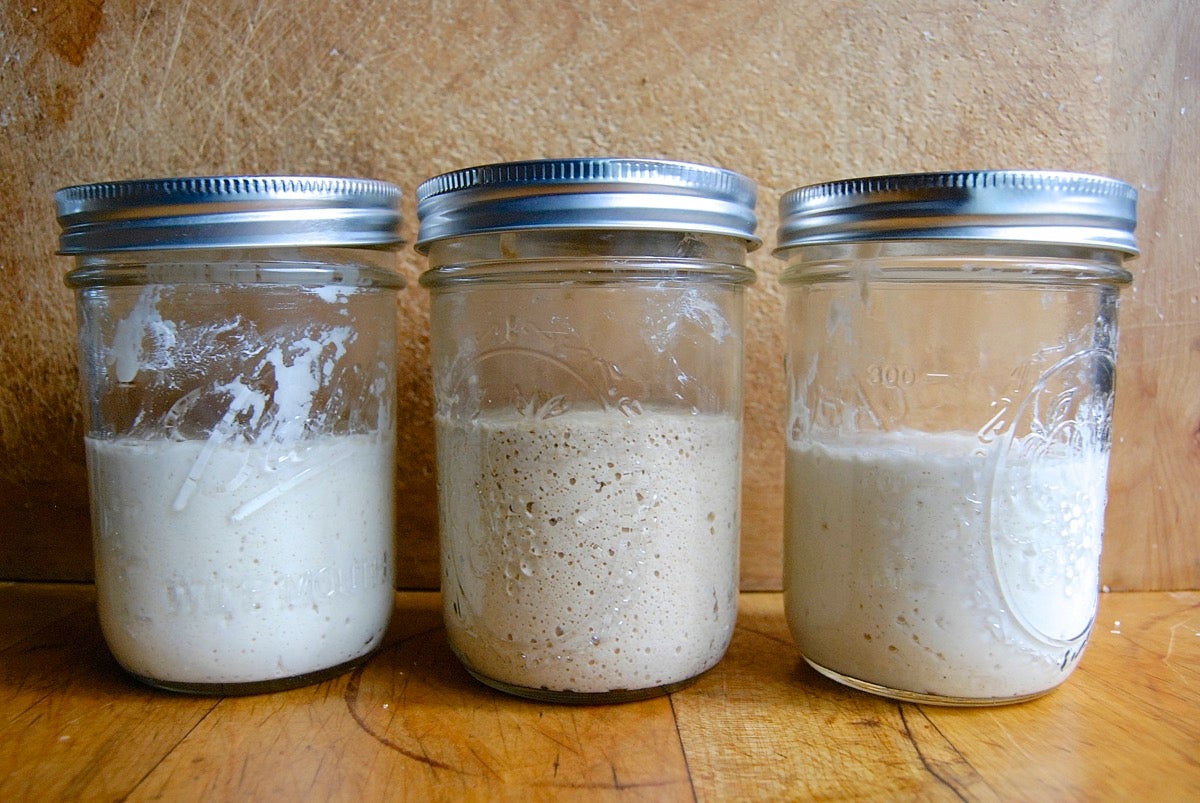
Twenty-four hours later, the starters are beginning to work. At this point, the grape-flour starter (left) and plain flour starter (right) are a bit behind the whole wheat starter (center).
Look at the bubbles in each, though. It always amazes me that flour and water, given time, can become a bread leavener — a.k.a. sourdough starter.
I discard all but 4 ounces of starter from each jar, feed them each a scant 1 cup (4 ounces) of unbleached all-purpose flour and 4 ounces of water, and walk away, expecting I'll feed them again the next day.
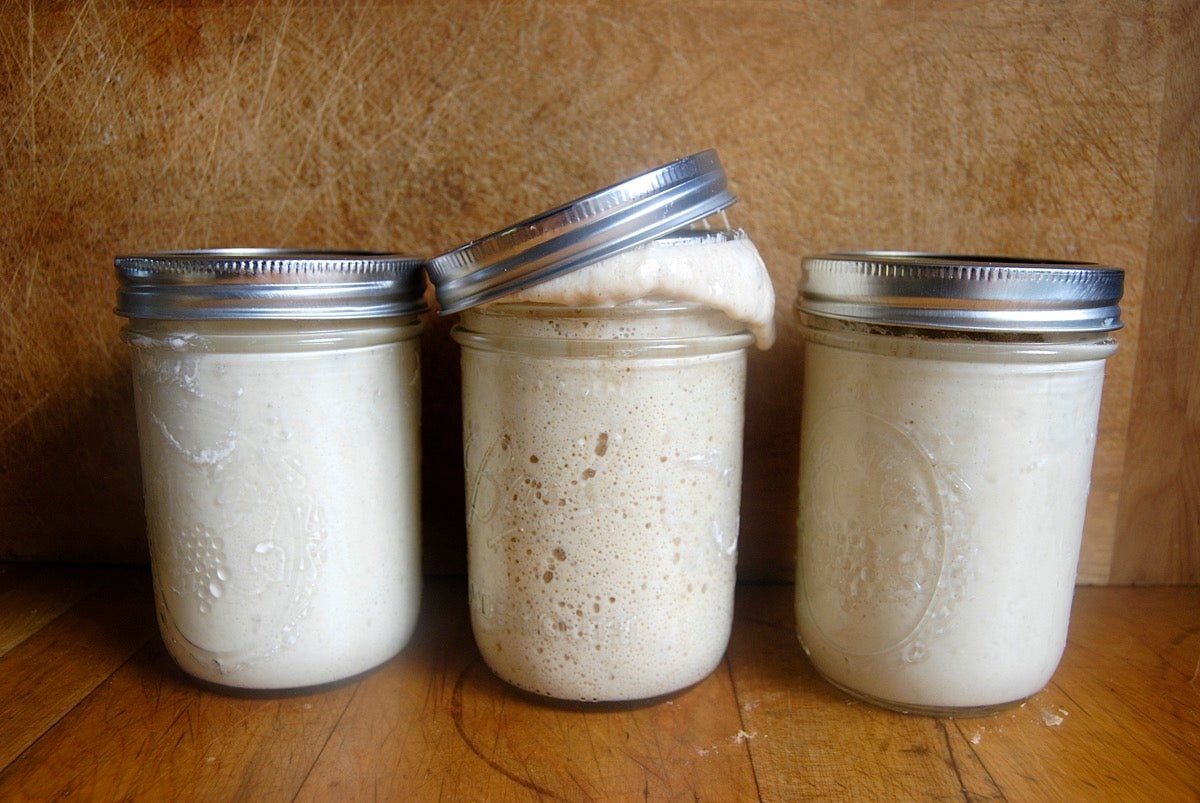
But within just seven hours ... oh, my, look at those starters go!
The grape sourdough starter and plain starter are neck and neck, nearly to the top of their respective jars. But the whole wheat starter has poked its lid off and is starting to ooze onto the counter. The whole wheat starter has clearly maintained (and even increased) its early lead.
What can I conclude from this experiment?
There's nothing wrong with burying wild grapes in flour and making a grape sourdough starter; it should perform well.
But if you're looking for a fast start, begin with whole-grain flour, such as wheat or rye. You don't need to continue to feed your starter with whole grains. But using wheat or rye as the vehicle for first attracting and trapping wild yeast is a smart choice.
As is taking your starter and making a loaf of Rustic Sourdough Bread.
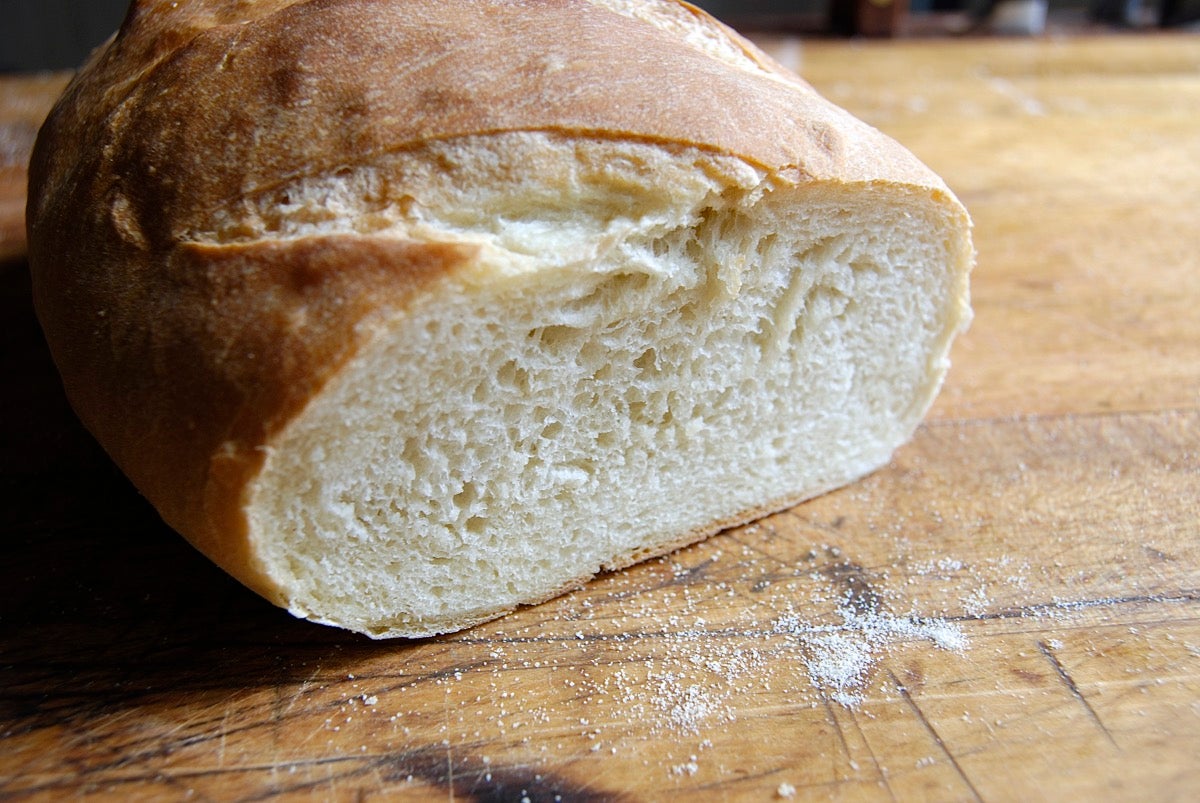
Want to make your own sourdough starter from scratch? See our blog post, How to make your own sourdough starter. And learn everything you need to know about sourdough baking in our sourdough baking guide.

